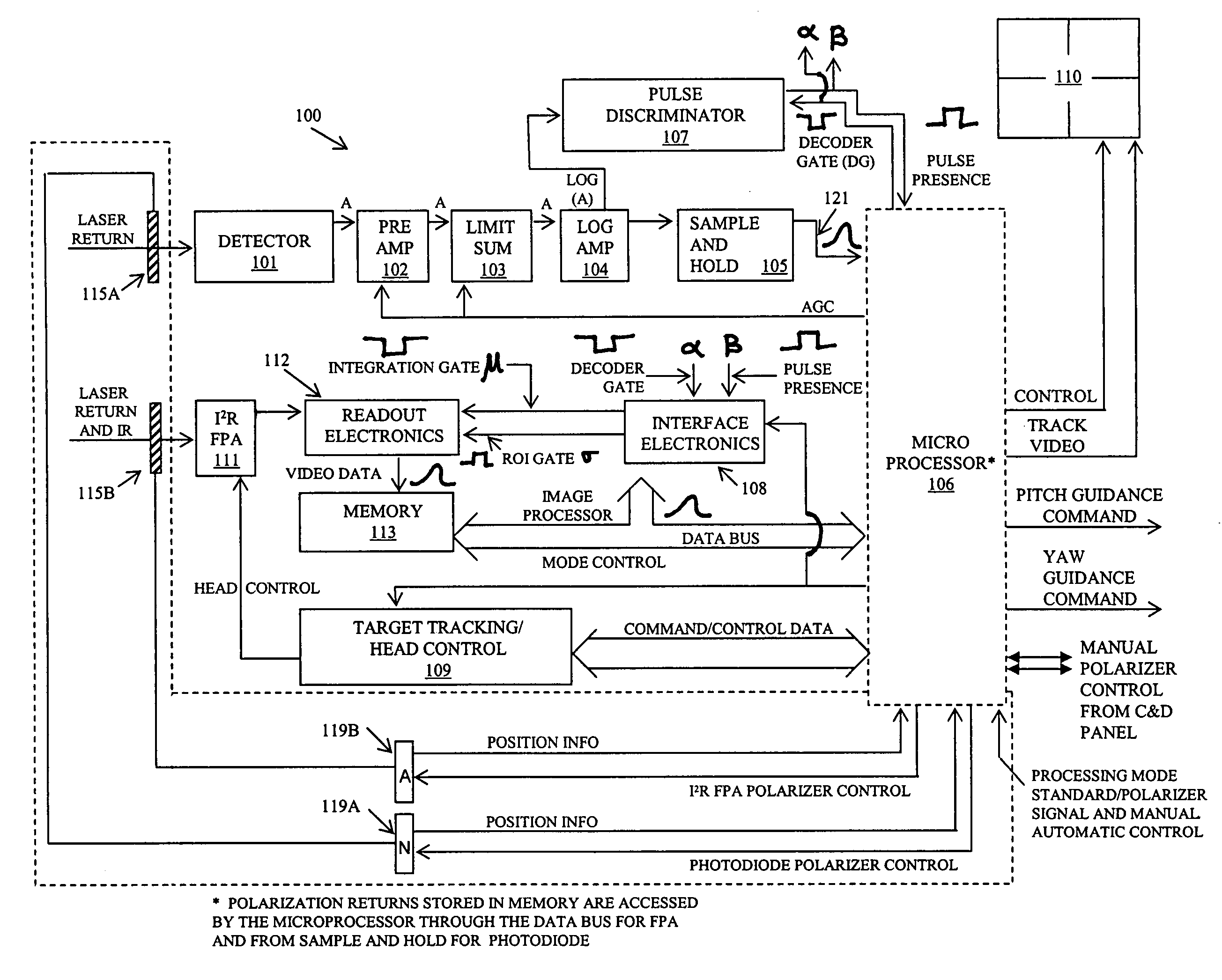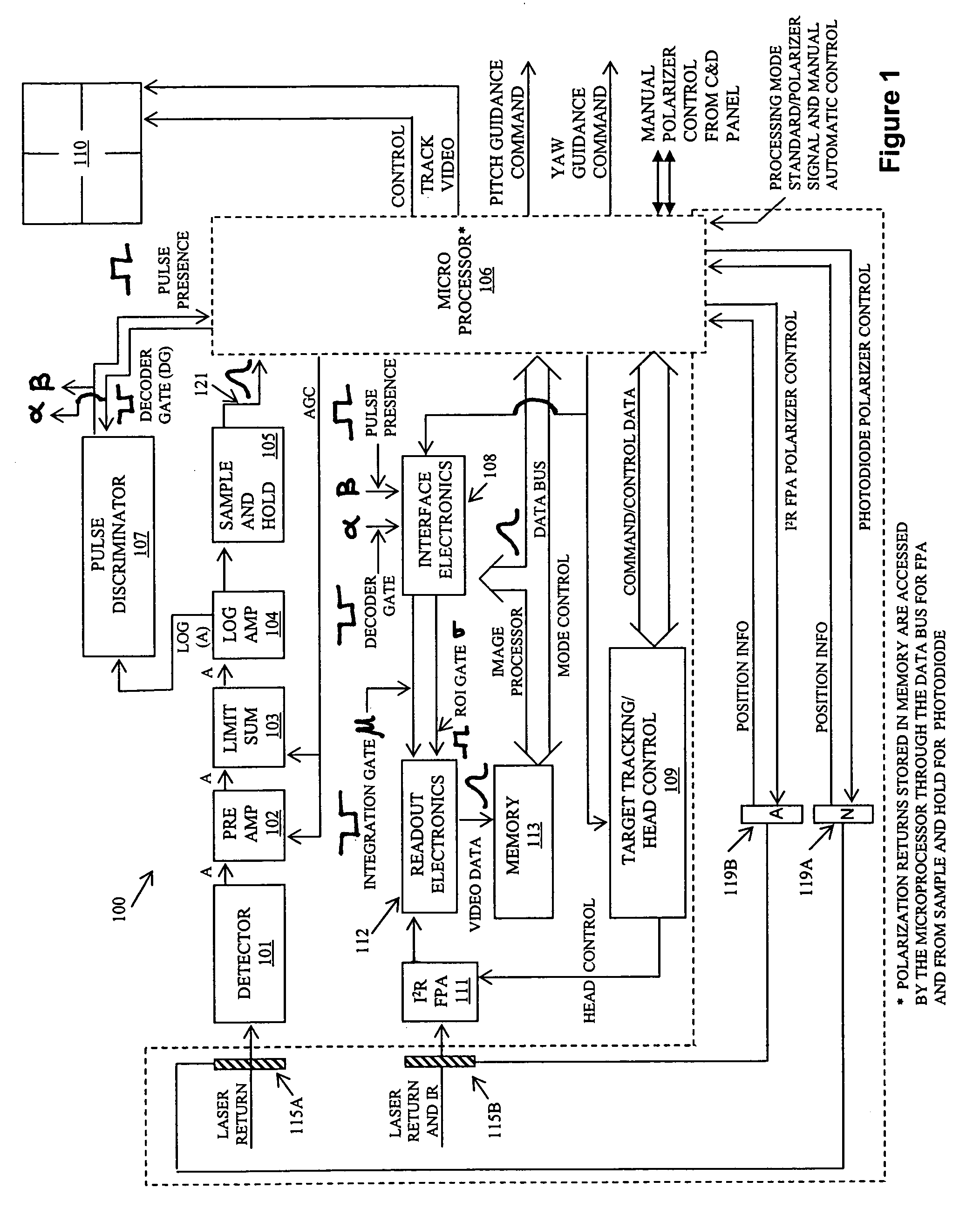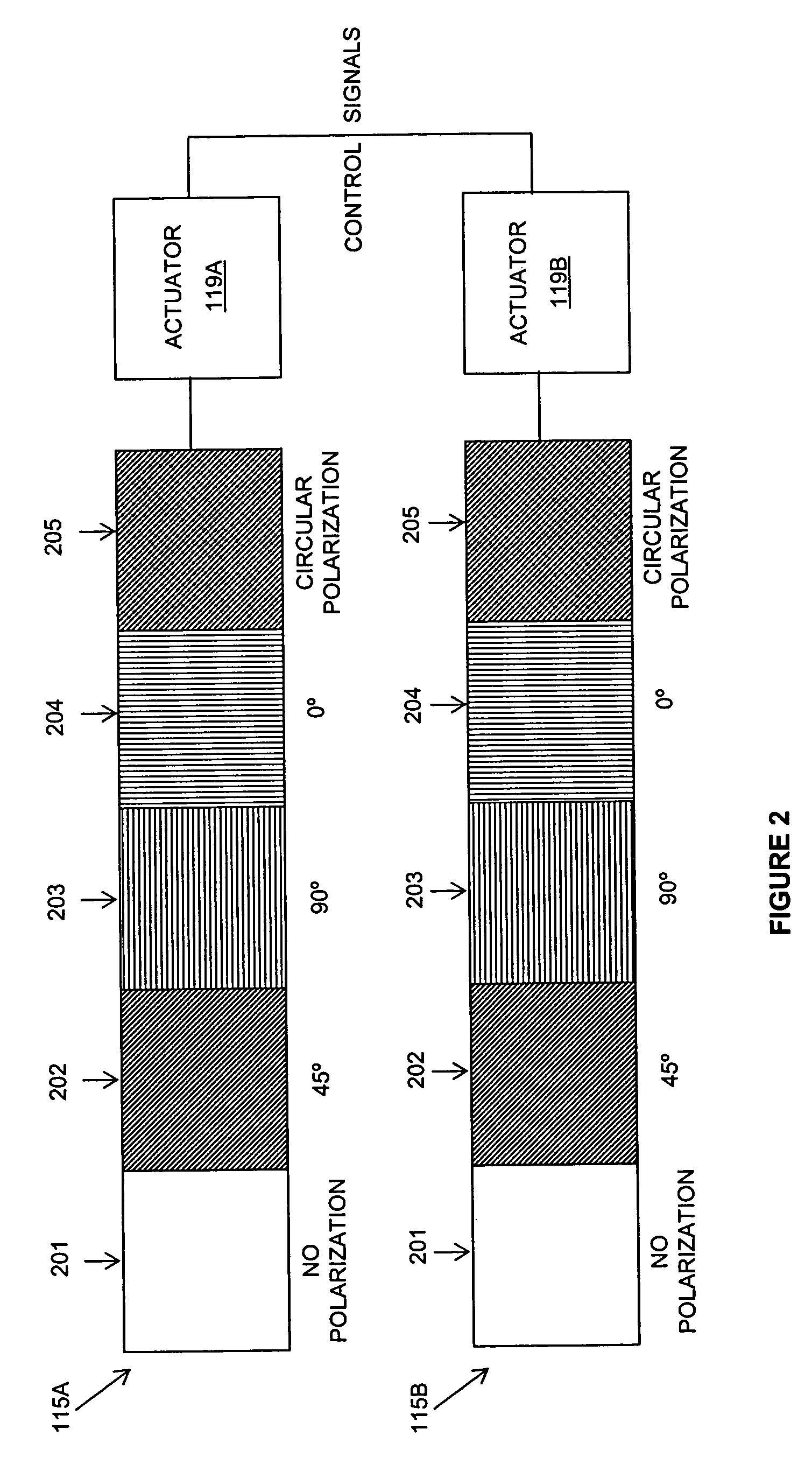Polarized semi-active laser last pulse logic seeker using a staring focal plane array
a logic seeker and semi-active laser technology, applied in the field of missiles, can solve the problems of difficult common name “clutter”, and difficulty in detecting background and/or jamming radiation, and achieve the effect of reducing the difficulty of target acquisition and tracking
- Summary
- Abstract
- Description
- Claims
- Application Information
AI Technical Summary
Benefits of technology
Problems solved by technology
Method used
Image
Examples
Embodiment Construction
[0013]FIG. 1 illustrates one embodiment of an improved SALLPL missile seeker 100, wherein the improvement is included within the dashed lines. In an illustrative embodiment, the improvement is achieved by movably disposing polarizers 115A and 115B in front of PIN photodiode detector 101 and staring imaging infrared focal plane array 111, respectively. In one example, polarizer 115A is disposed in, and completely covers, the PIN photodiode detector's field of view. Similarly, polarizer 115B is disposed in, and completely covers, the field of view of the staring imaging infrared focal plane array 111.
[0014]Actuator 119A is connected to the polarizer 115A and, and via a control channel, to the microprocessor 106. Actuator 119B is connected to the polarizer 115B and, via a control channel, to the microprocessor 106.
[0015]FIG. 2 is a schematic depiction of the polarization-actuator assemblies. In the embodiment shown, they are identical in configuration, but not necessarily of the same s...
PUM
| Property | Measurement | Unit |
|---|---|---|
| polarization angle | aaaaa | aaaaa |
| polarization angle | aaaaa | aaaaa |
| polarization angle | aaaaa | aaaaa |
Abstract
Description
Claims
Application Information
 Login to View More
Login to View More - R&D
- Intellectual Property
- Life Sciences
- Materials
- Tech Scout
- Unparalleled Data Quality
- Higher Quality Content
- 60% Fewer Hallucinations
Browse by: Latest US Patents, China's latest patents, Technical Efficacy Thesaurus, Application Domain, Technology Topic, Popular Technical Reports.
© 2025 PatSnap. All rights reserved.Legal|Privacy policy|Modern Slavery Act Transparency Statement|Sitemap|About US| Contact US: help@patsnap.com



